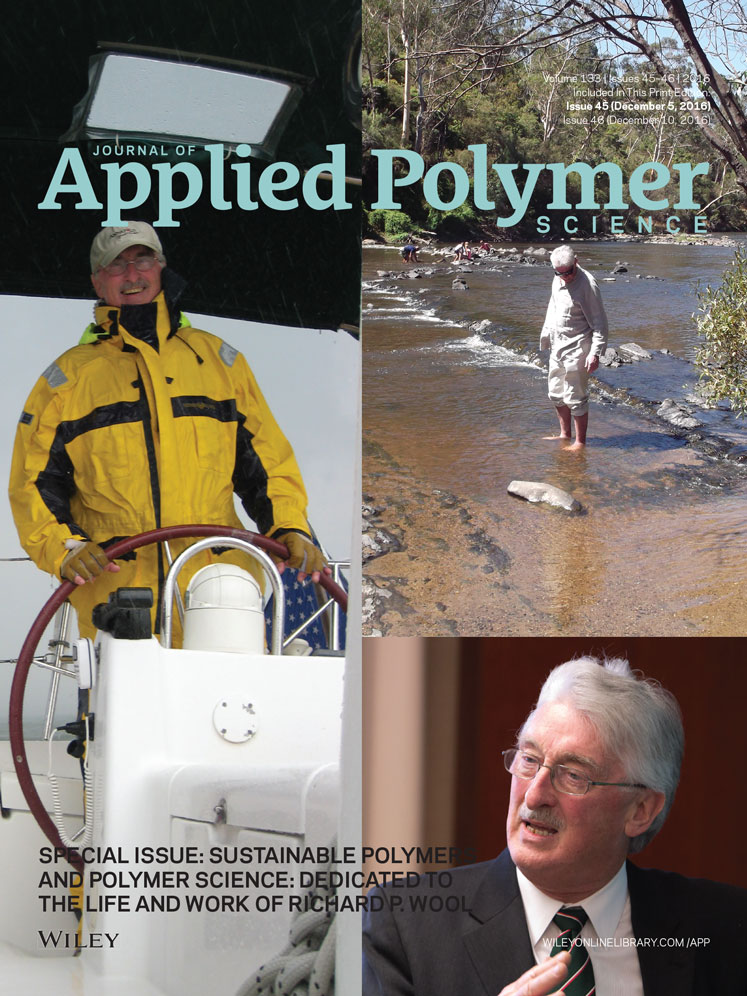Dynamic heterogeneity in epoxy networks for protection applications
ABSTRACT
The segmental dynamics and ballistic performance are investigated for a series of thermosetting epoxy networks composed of diglycidyl ether of bisphenol A (DGEBA) cured with mixtures of a rigid cycloaliphatic diamine and a series of flexible propylene oxide diamines. Formulations of DGEBA, cycloaliphatic diamine, and a low molecular weight propylene oxide diamine exhibit miscibility in the fully cured state, resulting in a single glass transition temperature (Tg), described by a Gordon-Taylor relationship. When high molecular weight propylene oxide diamines are used, the monomers are partially miscible, and the resulting cured epoxy exhibits dynamic heterogeneity, as evidenced by dual Tg's. These dynamically heterogeneous systems composed of rigid and flexible domains can exhibit enhanced ballistic impact response when the length scale of the phase separation is small, and the composition is near a phase inversion point. The dynamic heterogeneity also broadens the temperature window for impact performance, which is important for practical applications in military systems. © 2016 Wiley Periodicals, Inc. J. Appl. Polym. Sci. 2016, 133, 43566.




